The Yangnyeongsi Herbal Medicine Market: Experience Herbal Medicine In Seoul
Pharmacies, pharmacies everywhere, but did you know there are also herbal medicine markets and more holistic medicine places you can go in Seoul too? After living in Korea for many years, I become very interested in some of the more holistic ways that they take care of pain.
After birthing, Korean traditional medicine recommends staying in very hot rooms and eating seaweed soup to produce more milk. When I have headaches or indigestion, my husband were ask where it hurt and then push on pressure points in my hands the way his other would do to him. Why take medicine when you don’t have to?
Anyway, if you’re looking to learn more about herbs and what they do and even get your own concoction of herbal tea for your ailments, then you’ll definitely want to check out the Yangnyeongsi Herbal Market. This is a very interesting place to visit in Seoul which may also be a bit overwhelming if you’re on your own and don’t know what everything is. But it’s very worth the trip.

Experience the herbal medicine market in Seoul:
(This post contains affiliate links, which means I receive a certain percentage of a sale if you purchase after clicking at no cost to you. Thank you for your support.)
How To Get There
Don’t be confused, this is Seoul’s Yangnyeongsi Market. There is also a very large Yangnyeongsi Market, which is also an herbal medicine market, in Daegu. This is the one in northeastern Seoul.
Address: Yangnyeong Market, Jegi-dong Dongdaemun-gu, Seoul (서울 동대문구 제기동 서울 약령시)
By Subway: Jegi-dong Station, exit 2. One entrance to the market is immediately to the left, but to get to the main entrance to the festival area, walk straight for 1 minute and you will see a larger entrance on the left. OR Yongdu Station, exit 2. Walk straight to a large intersection, cross the street and turn left. You will come to the entrance on the right.
Basic Information
Days: Monday ~ Saturday. The market is closed on Sundays and national holidays with the exception of a few shops and street vendors.
Hours: 9:00AM – 7:00PM
Amenities: parking, museum

History of Yangnyeongsi Market
During the Joseon Dynasty (1392-1910) some 600 years ago, Bojewon, a medical institution, was set up in Jegi-dong. ‘Won’ means an inn that was located along a main thoroughfare. These inns provided food and lodging to travelers with government-related work or public missions. There were numerous inns around the city of Seoul including Itaewon, Hongjewon near Seodaemun and Jeon-gwanwon near Gwanghuimun.
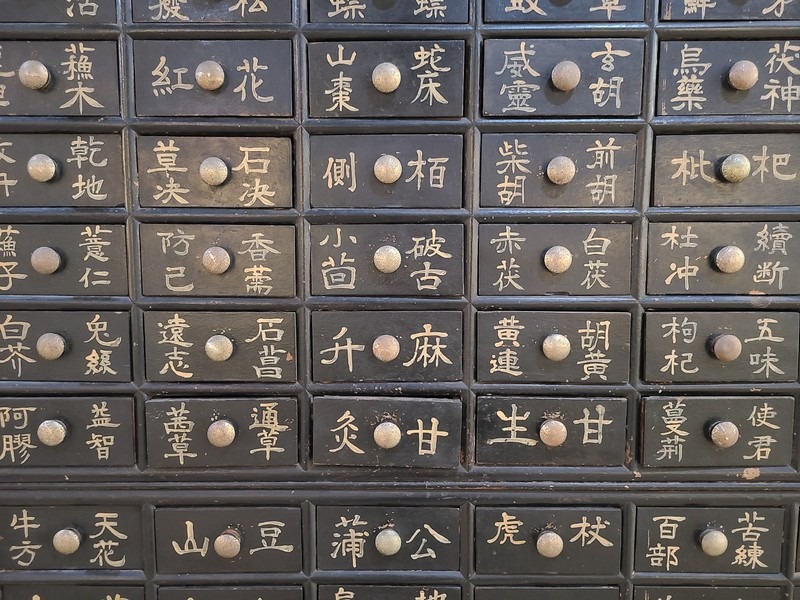
Bojewon was not only an inn though as it also housed an oriental medicine clinic that provided medical treatments and advice to the poor and those seeking help in the city. With this historical background it was no wonder that in the late 1960s when the Seoul Government was looking for a place to set up an herbal market, they chose this location.
Now Yangnyeongsi (약령시) is one of the largest herbal medicine markets in Korea with over 800 traditional medicine related businesses in the area. The original clinic may be gone, but there are plenty of places and spaces to learn about and get herbal and holistic medicines here.
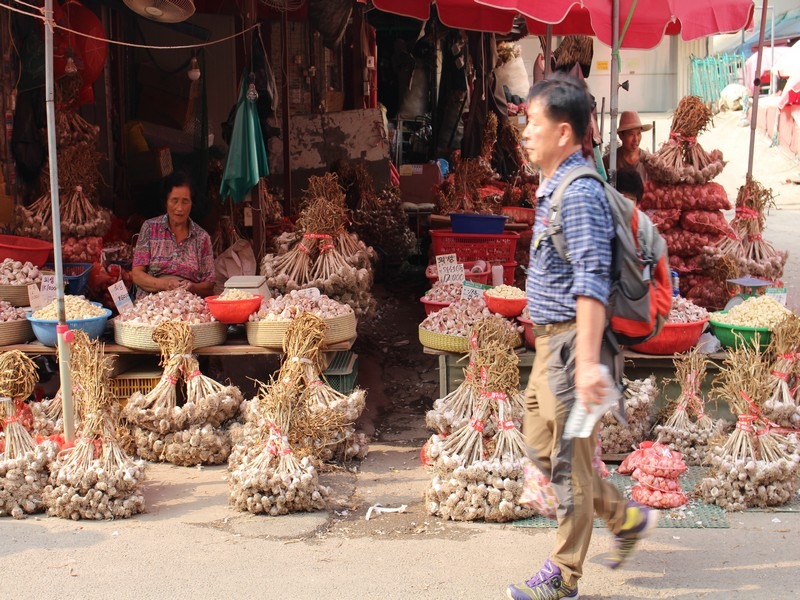
What To See
The streets are lined with shops that have bags, boxes and buckets of herbs, dried fruits and other plants that spill into the streets. The colorful goods beg the eye to stop and peruse everything high and low. Frog carcasses hang from the eaves next to dried persimmons and bark from trees known and unknown are stacked high. The shopkeepers are medicine men that will listen to your ailments and concoct a tea just for you.
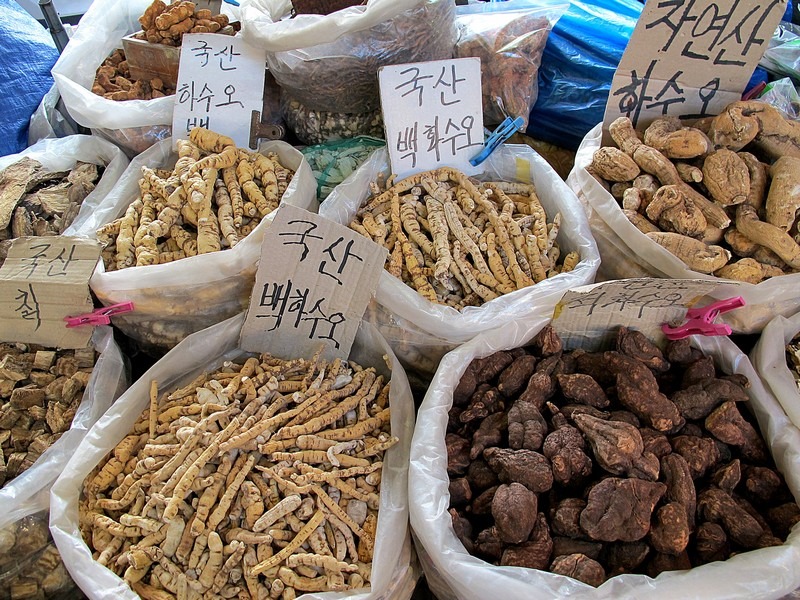

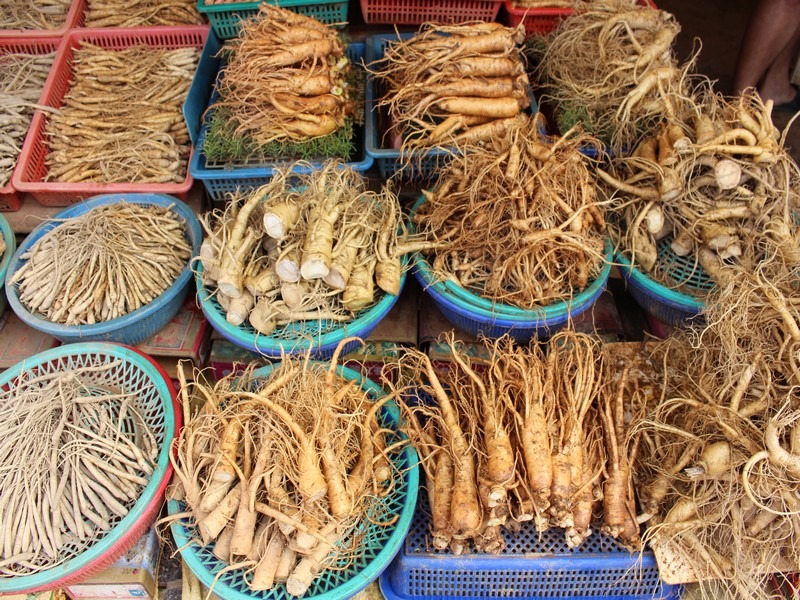
Popular gifts from the market include ginseng for energy and Youngji mushrooms that have been shown to prevent a range of adult diseases. Everything from honeycombs with live bees still buzzing around them in mesh sacks, cactus leaves and roots of all shapes and sizes can be found. Seeds, leaves, herbs, dried flowers and more excite the eyes as well as the nose and once they are ingested they are sure to aid whatever the problem may be.
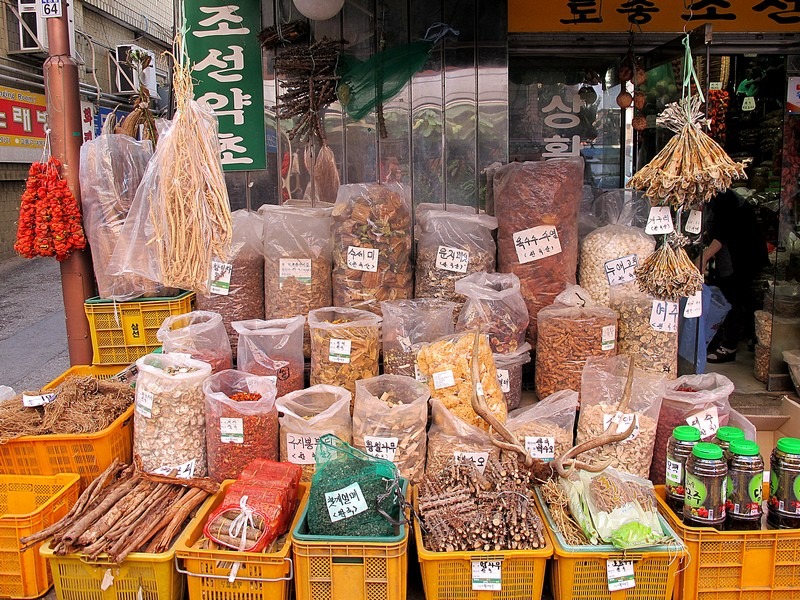
Seventy percent of the oriental medicine traded in Korea goes through here which means if you head here for your herbs, due to the low distribution costs, you can get most things that you’re looking for for up to 30% cheaper than elsewhere. Though some shopkeepers in the area may not want to deal with the foreigners who have no grasp on traditional remedies, many seem more than hospitable and welcome the labored conversations in order to introduce new people to their very old medical practices.
This is also a great area to get traditional Korean teas. If you want to have some knowledge about the teas and how they can help you, check out this guide to Korean traditional teas so you’ll know what to look for.
What To Do
There are a number of things you can do in the area like visiting the local tea houses and walking along the alleys of shops looking at the traditional medicine products. But, there are some places that you can learn about Korean traditional medicine if you don’t speak Korean and want to learn more.

Visit the Seoul K-Medi Center
The area doesn’t seem to get that much attention from the foreign tourists, but it really should. It’s worth a visit especially if you’re interested in learning more about holistic and natural remedies to whatever ails you. Previously, there was just the traditional market that really lacked in English information so it was no wonder that tourists didn’t frequent the area, but in 2020, the Seoul K-Medi Center was unveiled specifically to attract more tourists.
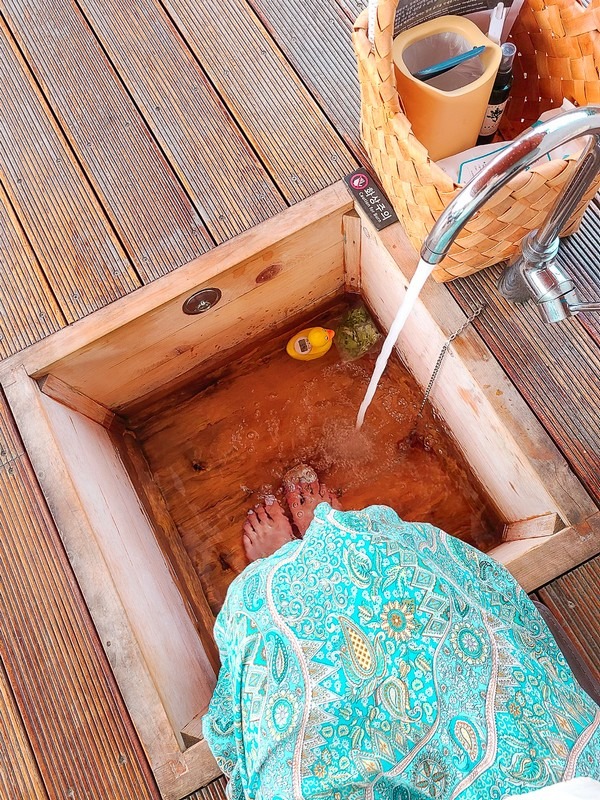
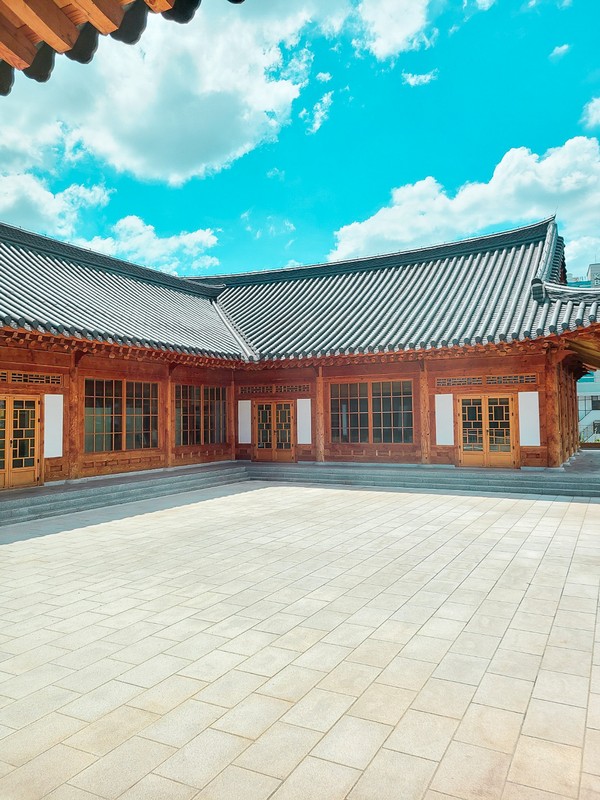
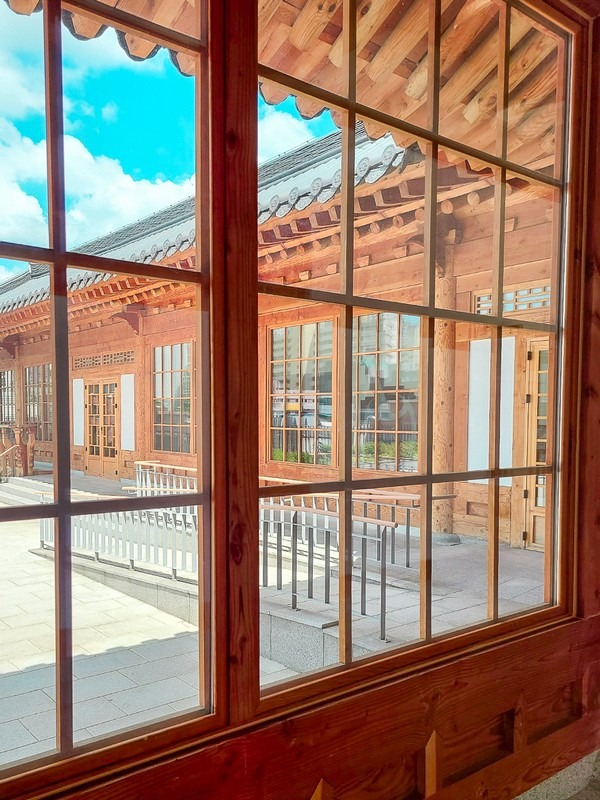
The Seoul K-Medi Center is a three story multipurpose cultural complex that teaches and promotes traditional Korean herbal medicine and hosts traditional educational programs and exhibitions to share the information. The exhibitions are beautiful and so well done. It is here that you can enjoy a footbath with herbs and also visit the Yangnyeongsi Herb Medicine Museum.

The building is pretty massive and built to look like the Korean traditional Hanoks which are so stunning. On the first floor, you’ll find various experiential rooms, the K-medi Beauty Shop, and information. There is also a cafe in the 1st floor annex. On the second floor, you’ll find the Yangnyeongsi Herbal Medicine Museum as well as the foot bath experience hall. Then on the third floor is the new Bojewon, which is a clinic and experience room.
Foot Bath Experience
- Hours: Tuesday, Wednesday, Saturday, Sunday at 11:00am, 2:30pm, 4:00pm; Thursday and Friday at 11:00am
- The foot bath experience is first come, first serve. Check in at the information desk on the 1st floor. The baths are set up so that just one person, or a couple could share. There are 12 baths available.
- Experience Fee: W5,000
Another experience to try is in the Bojewon clinic. Here they use a thermographic device and stress diagnostic machine for consultations with an Oriental medicine knowledgeable staff. After the consultation, try a thermomassage bed, a K-medi natural pack, herbal warmth bath, or aroma therapy.
Bojewon Experience
- Hours: Wednesday, Saturday, and Sunday at 2:00pm and 3:30pm
- This is a first come, first served experience. Check in at the information desk on the 1st floor. Up to 16 people can do this at once.
- Experience Fee: W5,000
- Address: 26 Yangnyeongjungang-ro, Dongdaemun-gu, Seoul

Enjoy the Yangnyeongsi Herbal Medicine Market. It’s a different area to explore and enjoy that most tourists don’t see. It’s definitely something interesting and a place to learn about more holistic medicines. What kind of herbs will you try out?
Did you like this post? Pin It!
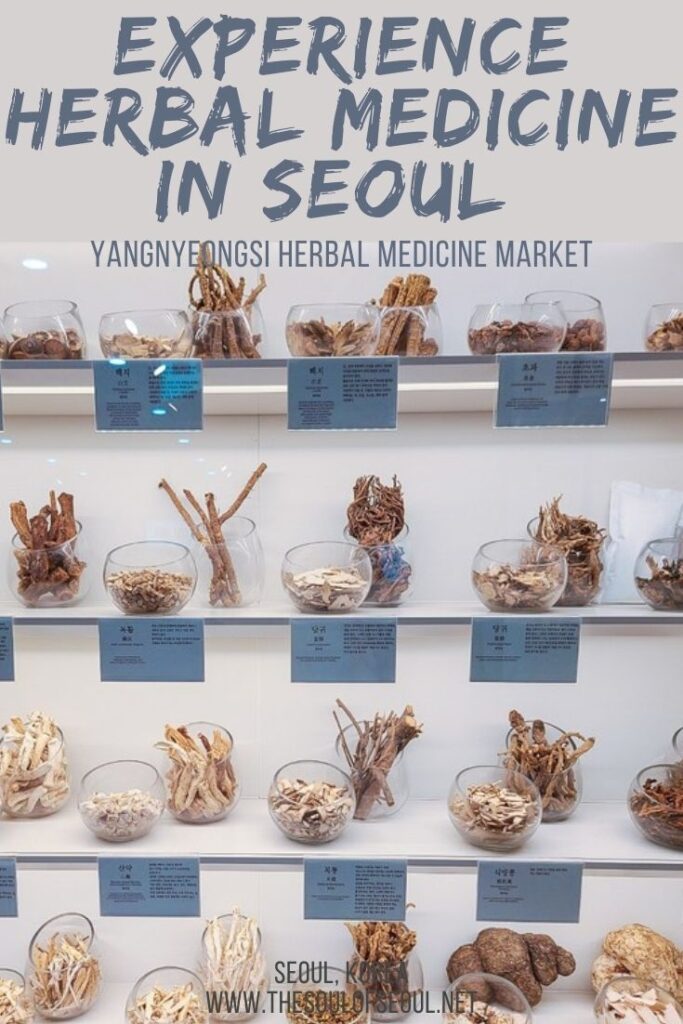
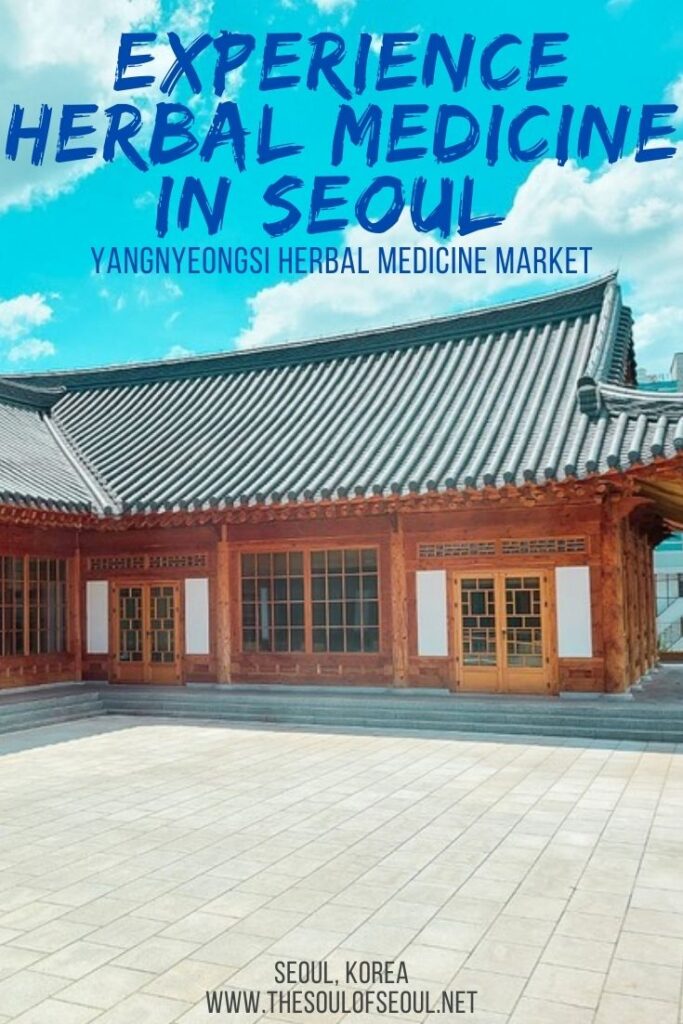

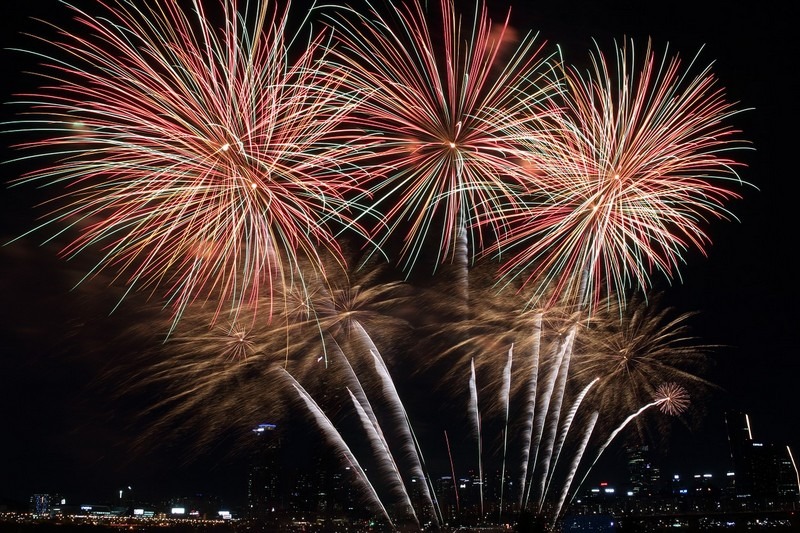
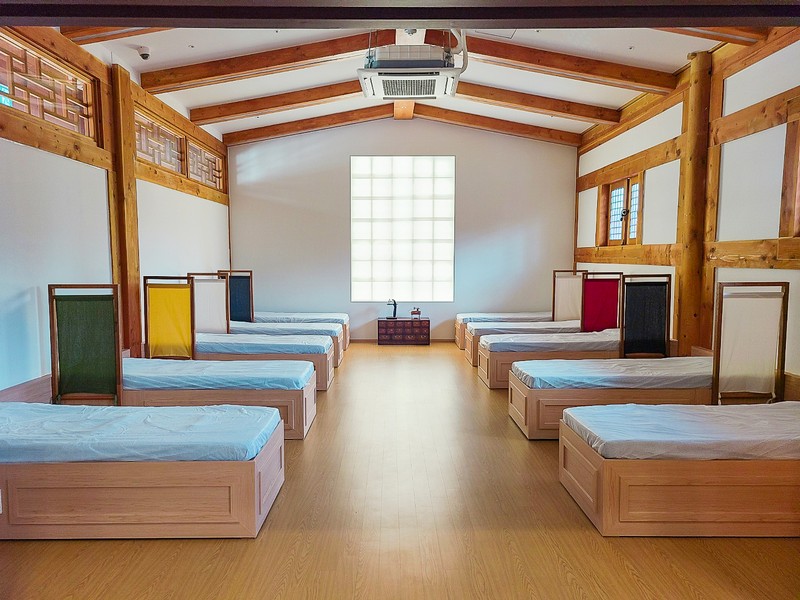
3 Comments
Kevin waters
Do you have Yun ryung go bon hwan (dan)
puppiesinparadise
I wish that we had access to such knowledge and expertise in Sweden. We do have old medicinal gardens that are living musuems. They have written books bu the information tell you what healing plants are and what they do but not doseages or tincures.. and how to use them.
Honey
Rosh
Reblogged this on Rose of Sharon Healing and commented:
Hallie at Soul of Seoul has done another great post on Korean Herbal Medicines. Koreans don’t use herbs, but rather roots, trees and some spices for medicinal purposes.